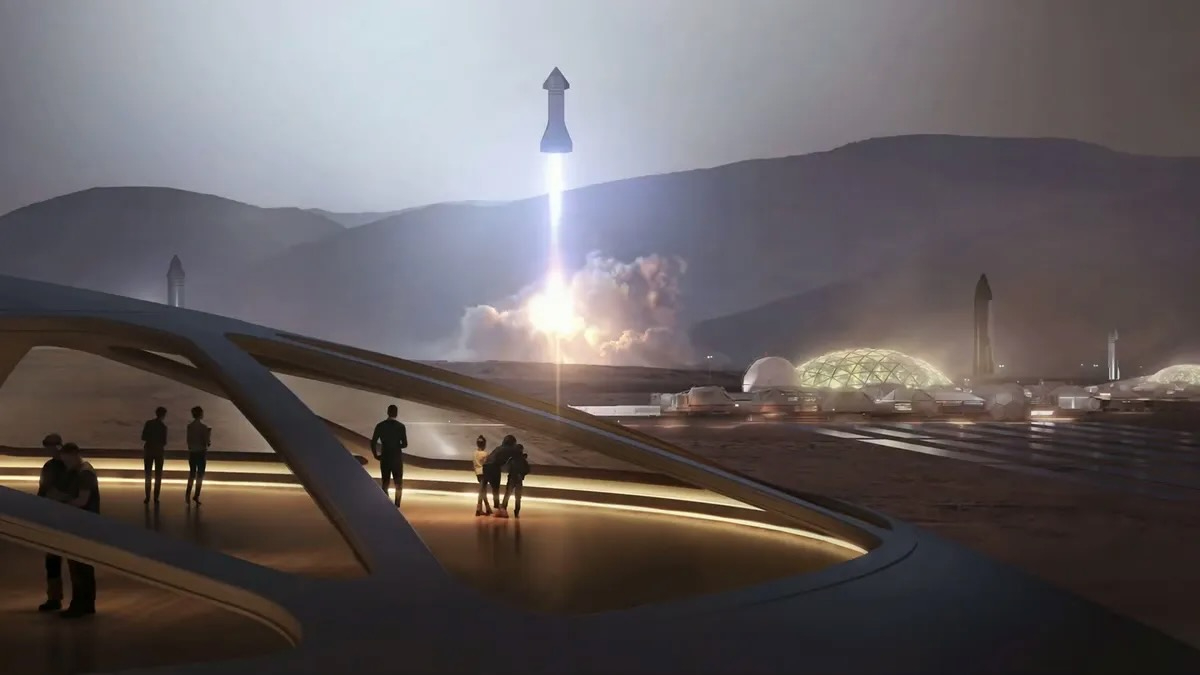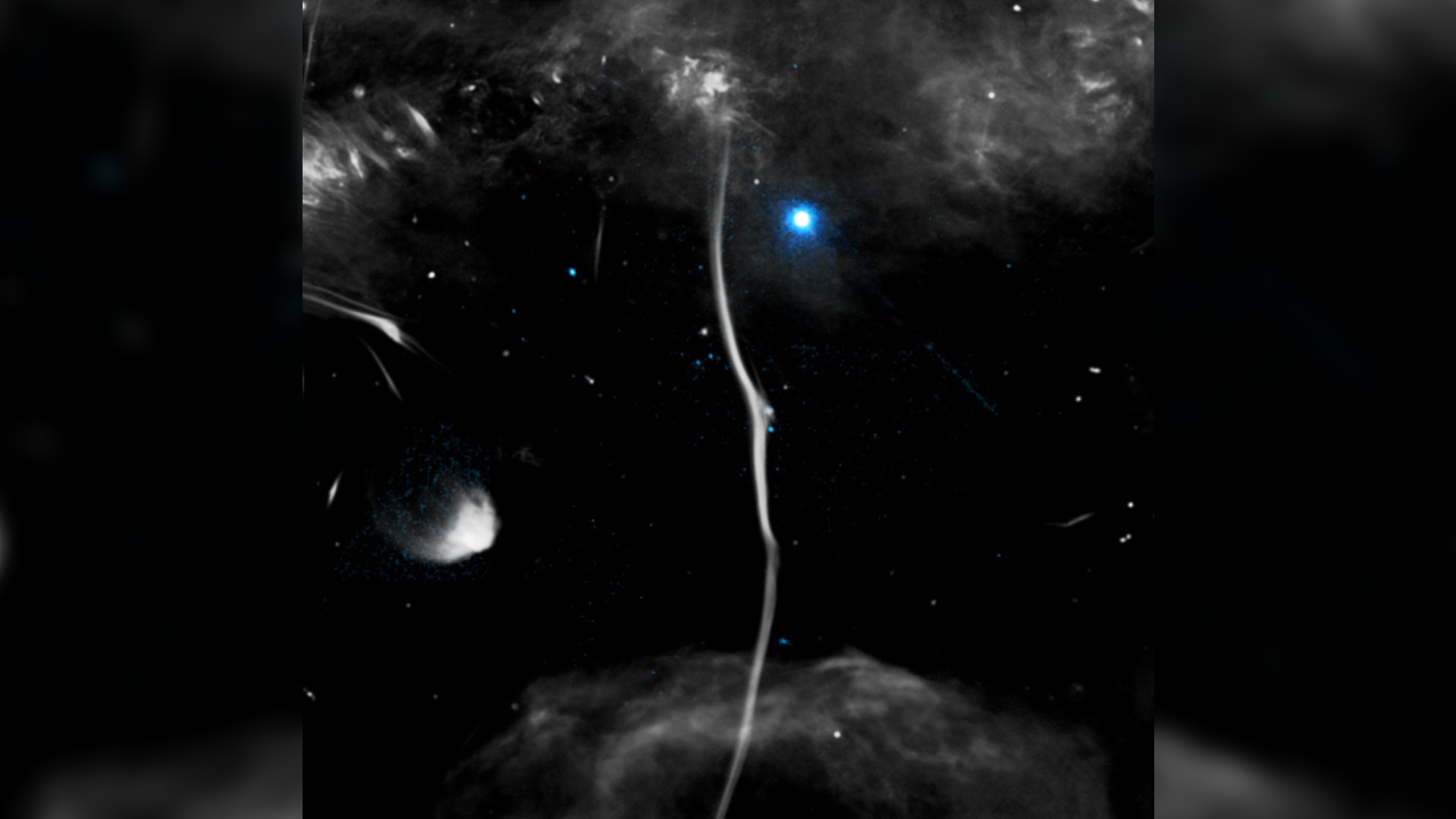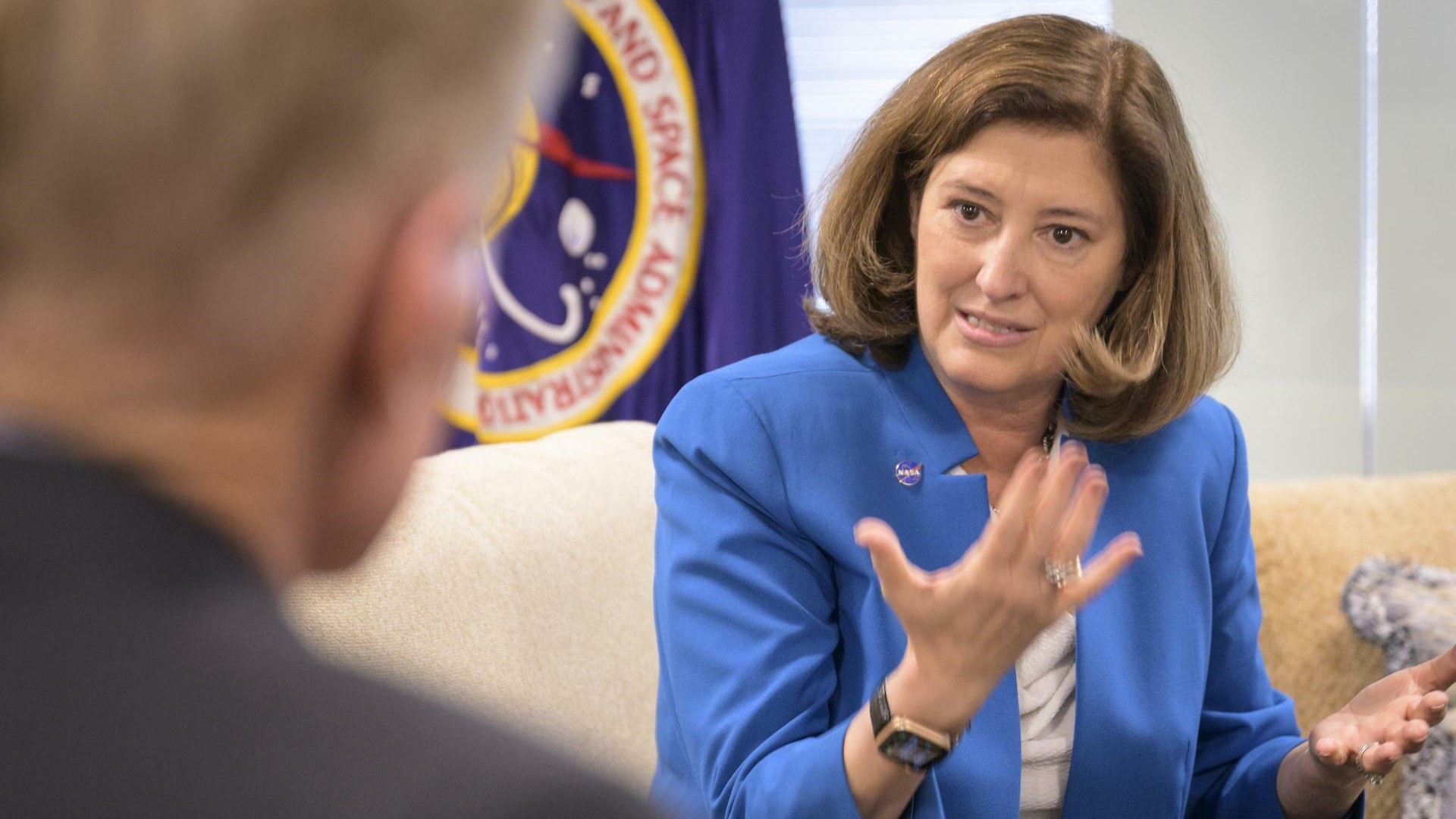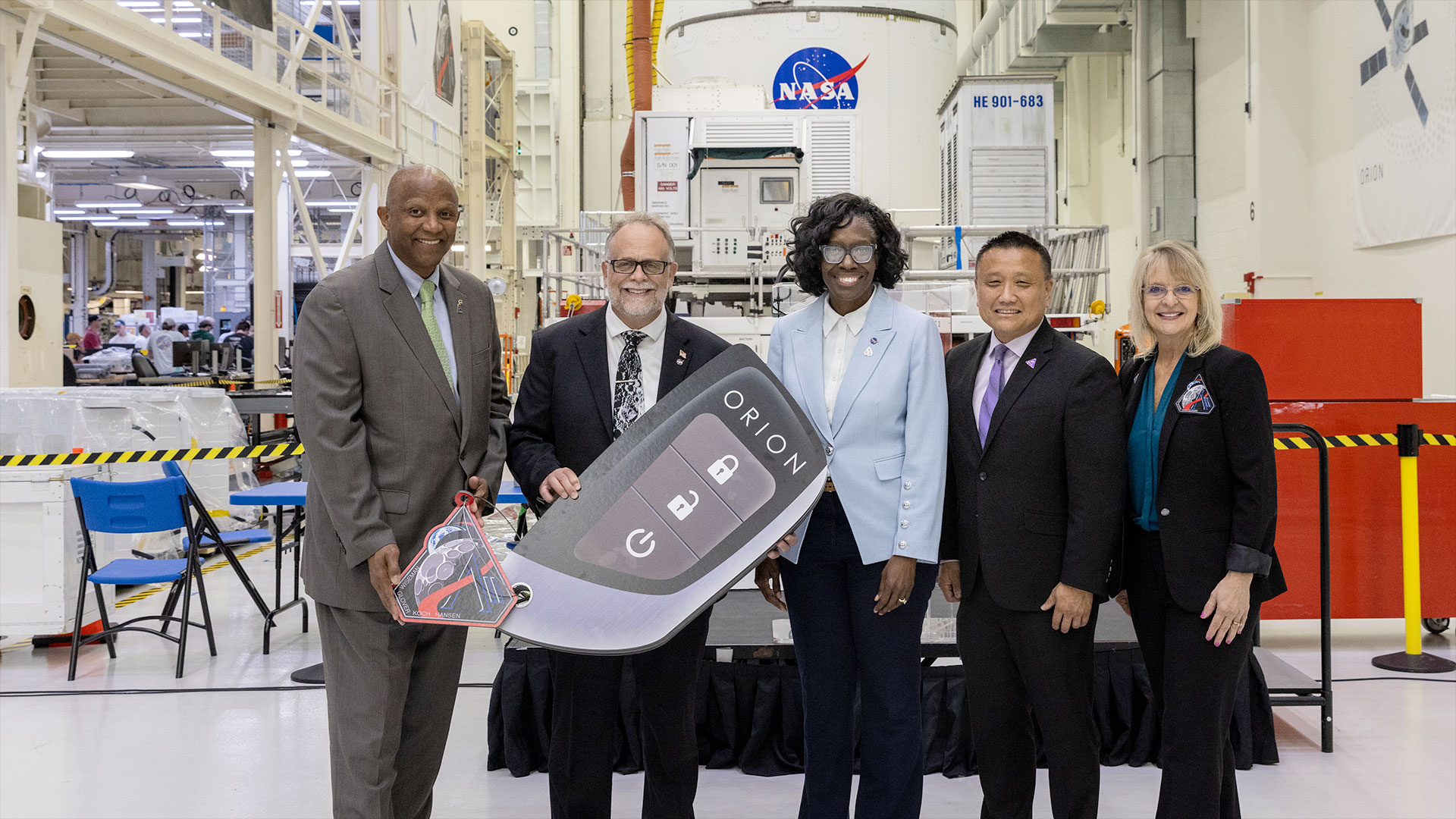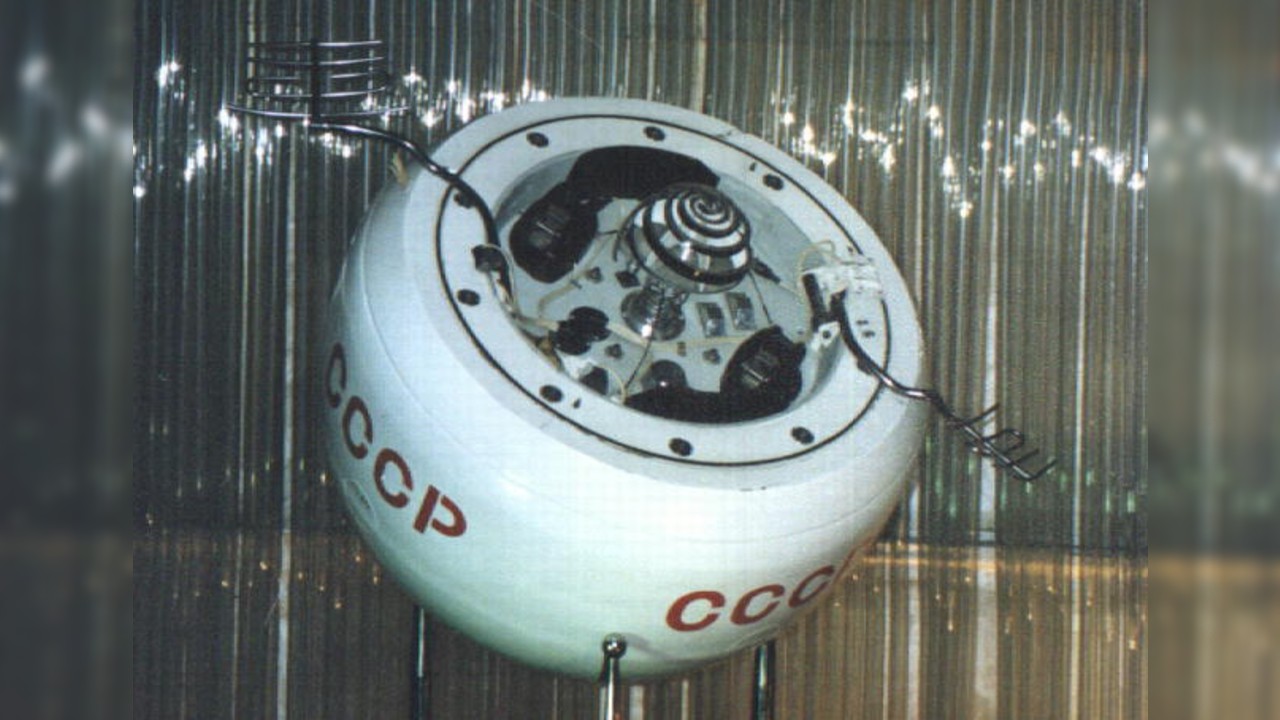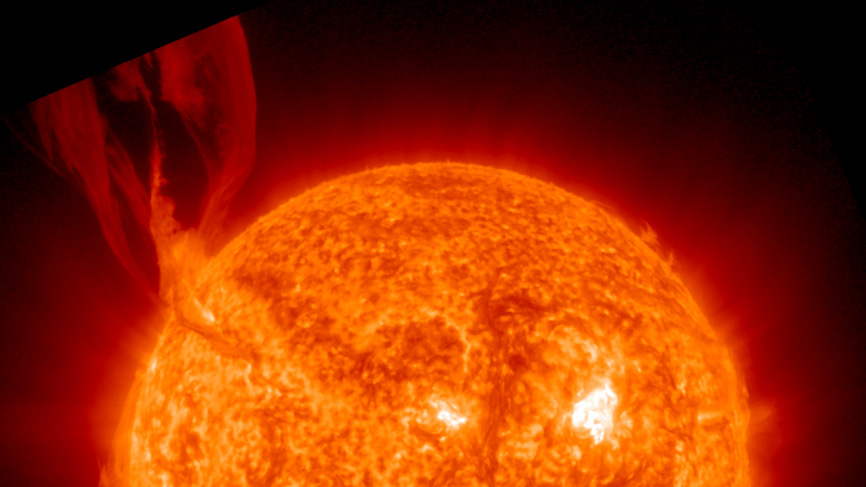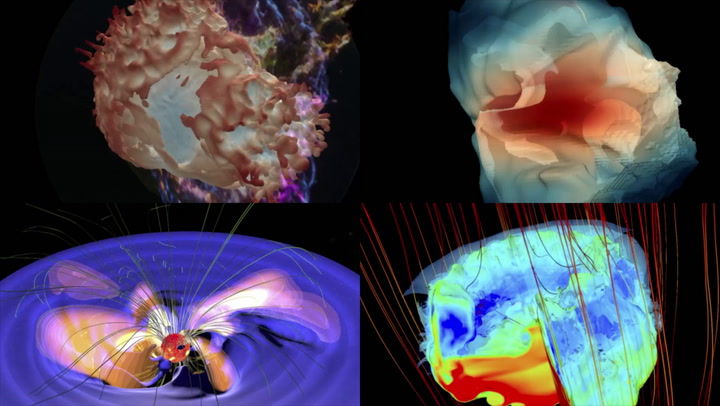Lockheed Test Flies Space Plane Prototype
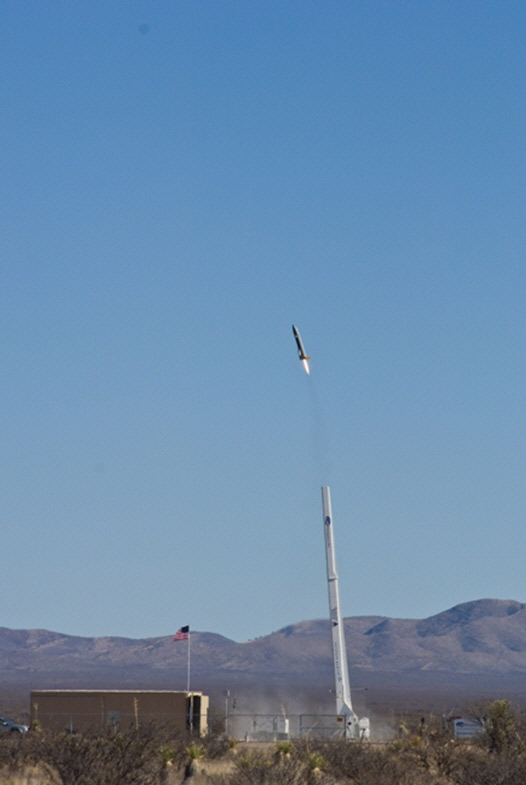
Lockheed Martin has tested a prototype reusable launch system by flying a sub-scale flight demonstrator from the site of New Mexico's proposed Spaceport America.
The successful test flight of the proprietary vehicle took place in December and was only recently disclosed. A company official said Lockheed Martin is planning more tests using ever-larger vehicles.
Lockheed Martin Space Systems teamed with launch provider UP Aerospace of Highlands Ranch, Colo., Dec. 19 to conduct a small demonstration launch at Spaceport America in southern New Mexico to evaluate proprietary technology the company currently has under development.
Test a little, fly a little
The winged craft soared skyward from a launch rail to an altitude of roughly 3,001 feet (915 meters) and was recovered shortly after the test flight, said Al Simpson, acting director, Advanced Programs, Human Space Flight for Lockheed Martin Space Systems Co. near Denver.
Simpson told SPACE.com in an April 17 telephone interview that the company is spending internal research and development money on the project to develop rapid, responsive, call-up to launch attributes — and at lower cost.
"This is a test a little, fly a little" effort, Simpson said. "You grow and build up over time. That way you are buying down risk incrementally — not trying to leap into what I call the big system development right off the bat," he said.
The self-propelled vehicle flown in December is based on some five years of internal research and development, incubated in a mini- Skunk Works-like environment, Simpson said, referring to the company's legendary facility in California that is famous for turning out high-tech vehicles in relative secrecy.
Get the Space.com Newsletter
Breaking space news, the latest updates on rocket launches, skywatching events and more!
"The key here is let's actually prove it [rapid, responsive, and lower-cost launch] — that there is a path here as opposed to making statements in Powerpoint,"he added.
Small checkout and launch crew
While the project has a name, Simpson said the name is under wraps for now. In addition, the craft's propulsion system is not being revealed at this time, he said.
The vehicle flown in December is 8 feet (2.4 meters) long with a wingspan of about 6 feet (1.8 meters), Simpson said. Processing and checking out the vehicle followed by liftoff was completed in a three-day period, utilizing a small checkout and launch crew, he noted.
"We are planning on additional testing down at Spaceport America this year — as we flush out and explore elements of the technology that we are trying to develop," Simpson said, citing examples such as avionics and guidance technology. The approximately one-fifth scale vehicle will be reflown this year, he said, working up to a larger-sized vehicle to be first launched next year.
A development roadmap for the autonomously controlled, pilotless space plane is spread out over a three- to four-year period, Simpson said, leading to the fielding of a larger-scale system, one that lowers the price tag of lofting satellites into Earth orbit.
"The secret test flight last December was a Lockheed Martin research vehicle that UP Aerospace launched using our ground operations equipment, launcher and three man launch crew," said Jerry Larson, president of UP Aerospace Inc. "Telemetry systems tracked the vehicle through the entire flight and we recovered and returned the vehicle to Lockheed Martin in just a few hours — a very happy customer," Larson told SPACE.com in an April 16 e-mail.
Lockheed Martin has signed a Memorandum of Understanding with the New Mexico Spaceport Authority (NMSA) to conduct future testing at Spaceport America, according to an April 15 NMSA press statement.
Completion of Spaceport America — which New Mexico officials proudly call the first spaceport built to handle commercial space operations — currently is planned for some time in 2010.
Having the relationship with Lockheed Martin validates the concept behind commercial space activity, "and proves that Spaceport America can deliver on the promise of lower cost, quicker turnaround launch activity," NMSA Executive Director Steve Landeene said in the April 15 press statement.
According to Landeene, spaceport planning and design work is nearly complete, and the first bid package for construction work is being prepared for release. Construction on the spaceport, he said, can begin once the NMSA receives their site operator's license from the Federal Aviation Administration.
Lockheed Martin launch activity will continue in 2008 under the amateur class prior to the Federal Aviation Administration vertical launch site license expected in 2009, NMSA noted in its press statement.
Lockheed Martin's Simpson said using Spaceport America is ideal for conducting flight activities, proving to be convenient, easy and simple.
"You need something lean and mean — and that's what they offered," Simpson added.
Join our Space Forums to keep talking space on the latest missions, night sky and more! And if you have a news tip, correction or comment, let us know at: community@space.com.

Leonard David is an award-winning space journalist who has been reporting on space activities for more than 50 years. Currently writing as Space.com's Space Insider Columnist among his other projects, Leonard has authored numerous books on space exploration, Mars missions and more, with his latest being "Moon Rush: The New Space Race" published in 2019 by National Geographic. He also wrote "Mars: Our Future on the Red Planet" released in 2016 by National Geographic. Leonard has served as a correspondent for SpaceNews, Scientific American and Aerospace America for the AIAA. He has received many awards, including the first Ordway Award for Sustained Excellence in Spaceflight History in 2015 at the AAS Wernher von Braun Memorial Symposium. You can find out Leonard's latest project at his website and on Twitter.
